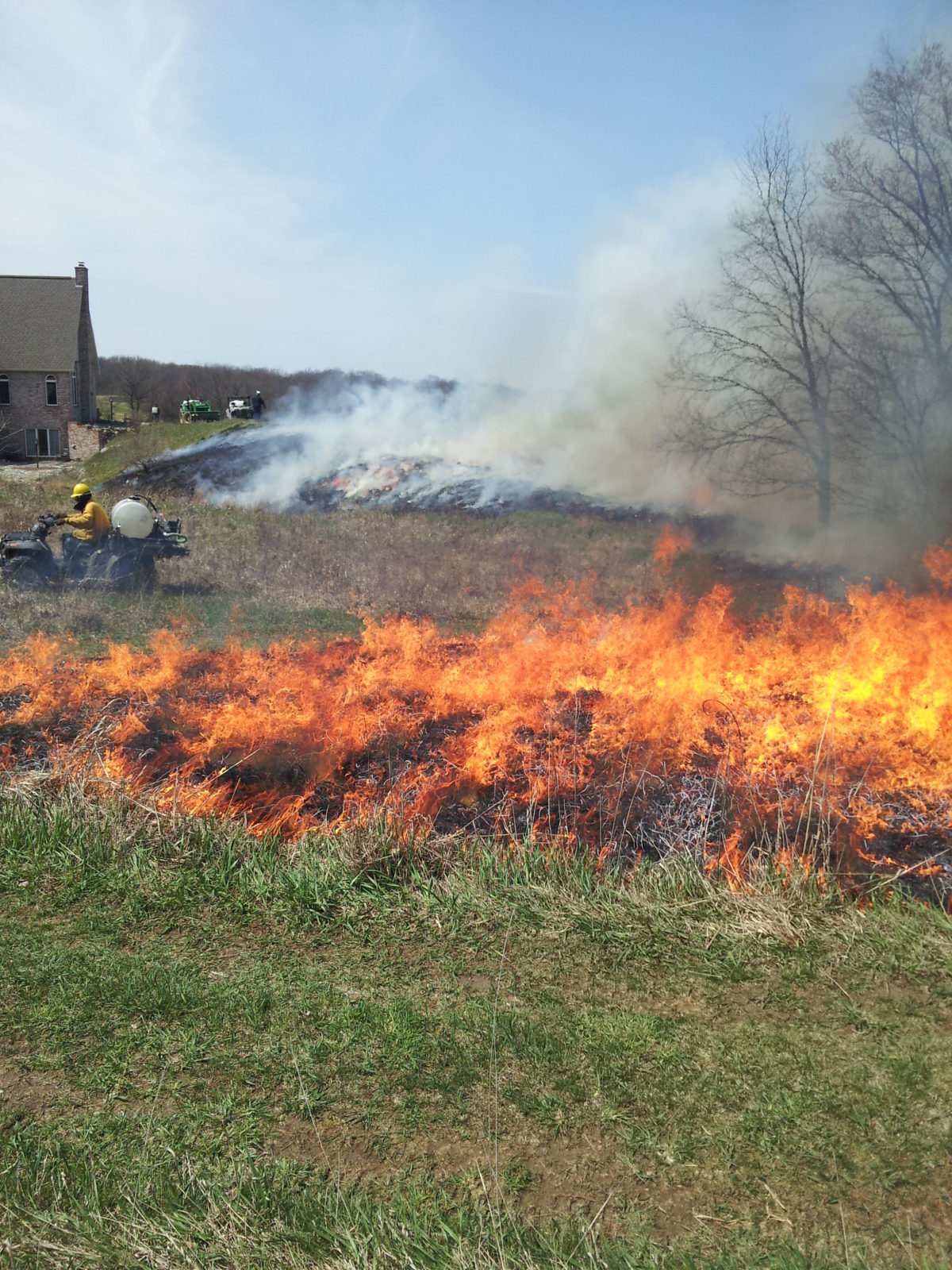Maintenance
After you’ve planted, controlling weeds is the priority for the first three years. The native plants will only grow a few inches the first year; weeds will grow much thicker and taller than the natives and can shade out the native seedlings. A simple, but diligent, maintenance plan will ensure your native planting reaches the best possible outcome.
First Year
Mowing the vegetation to a height of 4-6 inches when it reaches 10-12 inches. If you get a lot of rain, you may have to mow about once a month. Mowing keeps the weeds from shading out the natives, as well as stopping the weeds from producing new seeds. Stop mowing at the end of the growing season. A little weed growth at the end of the year will help protect the seedlings during their first winter.
Hand pulling weeds and herbicide are generally not recommended in the first year. You risk harming the sensitive native seedlings. If aggressive weeds, like Canada thistle or reed-canary grass, appear to be a problem you can consider careful herbicide application. Take care not to allow herbicide to contact native vegetation.
Second Year
When the vegetation reaches 12-18 inches, mow it down to 8 inches. Because you’re allowing it to grow higher, you should mow fewer times in the second year. You’ll see some natives blooming, but it is worth sacrificing the flowers at this stage to achieve better weed control and a more successful native planting in the long term. The natives will persist through mowing and a few will bloom at lower heights in response to repeated mowing.
Hand pulling and spot treatments of herbicide may be needed for some of the common competitive weeds such as spotted knapweed, Canada thistle, burdock, wild parsnip, sweet clover, and Queen Annes lace.
Third Year and Beyond
If the planting is establishing as it should, you should now have enough fuel accumulated to burn on a regular basis. If burning doesn’t occur, a thatch layer can accumulate, causing poor growth or plants to die out completely. Burning kills or at least reduces weed growth and stimulates growth of native species.
Early spring burns are most common. Only experienced, trained crews should perform a prescribed burn. Be sure to check your local fire regulations and obtain the appropriate permits. A wide path (10-15 feet) or burn lane should be mowed throughout the growing season around the perimeter of the planting prior to a burn.
After the third year, burning should take place every one to three years. Consider a burn rotation in which a half or third of the area is burned one year and another section the next. This will give ensure that over-wintering butterflies, moths, and nesting birds do not temporarily lose all of their habitat.
If burning is not allowed or not an option in your area, mowing and removing the clippings, although not as effective, can be a good substitute. Mow close to the surface (4 inches) in early spring (February through April) and remove the clippings with a rake or dethatcher. Note that some ground-nesting grassland birds nest as early as April, so the earlier the better. If removal of clippings is not possible, raise mowing height to 8 inches or so.
Spot treating with herbicide may still be needed if weeds persist, however, once your natives are established, they should require minimal maintenance.
For the complete printer-friendly PDF version of our Planting Guidelines, click here.

